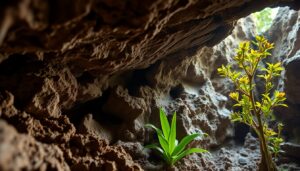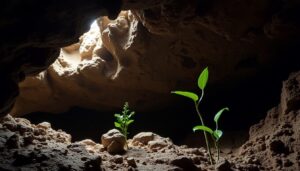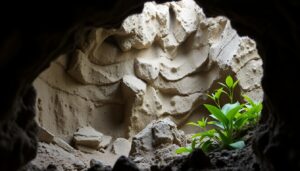Belize is renowned for its stunning coral reefs and ancient Maya ruins, but it also conceals a treasure trove of extraordinary archaeological and ecological marvels beneath its surface. The extensive limestone cave systems of Belize have long fascinated researchers and adventurers alike, offering unique insights into the ancient Maya ritual life, comprehensive records of climatic changes, and distinct subterranean ecosystems. Recent scientific explorations within these Belizean caves have led to astonishing discoveries that not only enhance our understanding of the Maya civilization but also illuminate historical climate change and the existence of rare, previously unknown cave-dwelling species.

1. Delve into the Fascinating History of Maya Rituals Uncovered in Belizean Caves
The mesmerizing cave systems scattered throughout Belize, including the famous Actun Tunichil Muknal (ATM Cave), Barton Creek Cave, and Cara Blanca Caves, have produced some of the most compelling archaeological evidence regarding the Maya sacrificial and ceremonial practices. These sacred caves were perceived as gateways to the Maya underworld, known as Xibalba. Recent archaeological findings have significantly enriched our understanding of their profound spiritual and societal roles, revealing layers of complexity that were previously unrecognised and hinting at the intricate beliefs held by the ancient Maya.
1.1 The Revelatory New Identity of the “Crystal Maiden”
The iconic calcified skeleton, popularly known as the Crystal Maiden, found within ATM Cave, has historically been regarded as the remains of a female sacrifice. However, recent forensic analyses have prompted a critical reevaluation of this long-held assumption. Through sophisticated isotopic and morphological research, findings now indicate that these remains likely belong to a young male. This pivotal revision invites scholars to reconsider the social and religious dynamics surrounding human sacrifices in Maya ritual practices, particularly during periods of environmental stress, such as the significant droughts that occurred around the 9th century CE, thus deepening our comprehension of the era’s complexities.
1.2 Uncovering New Contexts for Maya Ritual Practices
Excavations at Barton Creek and Cara Blanca have led to the discovery of previously undocumented ceremonial chambers, complete with well-preserved pottery assemblages and human remains, including those of both infants and adults. The presence of “kill holes” punctured through ceramic vessels suggests widespread ritualistic ceremonies aimed at “spirit release” performed within these sacred caves. These significant discoveries imply that Maya cave rituals were not only more complex but also more widely practiced across various regions than previously believed, reflecting a rich tapestry of cultural practices that underline the importance of caves in Maya society.
1.3 The Fascinating Connection Between Maya Cave Rituals and Archaeoastronomy
Recent research has revealed alignments of cave altars and hieroglyphic inscriptions that correspond with critical solar events, such as equinoxes and solstices. Using advanced techniques like laser scanning and photogrammetry, researchers have confirmed that beams of natural light penetrate deeply into selected caves on sacred dates, highlighting focal points designated for ritual activities. This compelling evidence supports the theory that Maya priests utilised caves not merely as spiritual sites but also as astronomical observatories, intricately linked to their calendrical system and rituals, showcasing the sophisticated relationship between their culture and the cosmos.
2. Gaining Insights into Paleoclimate from Cave Stalagmites in Belize
Thorough analysis of various stalagmites from caves such as Caves Branch and Actun Halal has enabled scientists to date and examine stable oxygen and carbon isotopes, which provide intricate paleoclimatic records. The layered structures of these mineral deposits create year-by-year chronologies of humidity and rainfall, strongly correlating with archaeological evidence of societal changes and the eventual collapse of the Maya civilization around 900 CE. These significant findings reveal critical climate shifts that profoundly affected the region, helping to explain the dynamics of human adaptation and resilience in the face of environmental challenges.
Researchers have identified significant declines in precipitation, termed megadroughts, which likely strained food production systems and triggered an increase in ritualistic activities within the caves. The paleoclimate reconstructions derived from Belize’s caves represent some of the most comprehensive climatic records in Mesoamerica, providing essential insights into how natural climate fluctuations have influenced human history and societal evolution, further enriching our understanding of the complex interplay between environment and culture.

3. Unveiling the Rich Biodiversity: The Unique Ecosystems Within Belize’s Caves
In addition to their archaeological and geological significance, the caves of Belize are thriving ecosystems that host rare life forms specifically adapted to survive in perpetual darkness and isolation. Recent speleobiological expeditions have documented an astonishing array of unique species, including blind crustaceans and specialised cave fish, alongside distinct bat colonies exhibiting unusual behaviours. These findings underscore the ecological importance of Belize’s caves and highlight their critical role in maintaining biodiversity, showcasing the intricate relationships between species and their environments.
3.1 Discovering New Species and Patterns of Endemism in Cave Ecosystems
Researchers have identified several novel species of crustaceans endemic to the subterranean waters of Belize, showcasing unique genetic adaptations indicative of long-term evolutionary isolation. Additionally, various cave systems support bat species that are crucial for Belize’s biodiversity, including fruit bats, which play essential roles in seed dispersal and pollination, contributing significantly to the health of local ecosystems. These discoveries not only enhance our understanding of cave biodiversity but also highlight the need for conservation efforts to protect these unique species and their habitats.
3.2 Unveiling Subterranean Lakes and Their Unique Inhabitants
Exploration of previously unmapped cave passages has led to the discovery of water-filled chambers populated with unknown fauna. These subterranean lakes potentially host extremophile microorganisms akin to those theorised to exist on other planets, drawing the attention of both astrobiology and microbiology communities. These exciting findings could provide critical insights into the adaptability of life in extreme environments, opening new avenues for research into biological resilience and the potential for life beyond Earth.
4. Understanding the Broader Implications of Recent Discoveries
- Holistic Insights into Maya Studies: The archaeological and paleoclimatic insights gained from Belize’s caves significantly enhance narratives surrounding ritual practices, political upheaval, and climate-induced societal shifts, fostering a deeper understanding of the complexities of ancient civilizations.
- Conservation Significance: These caves are not only vital heritage sites but also biodiversity hotspots that require protection from tourism and environmental threats to maintain their integrity and ecological value.
- Impact on Sustainable Tourism Development: Implementing sustainable, guided access to these caves is essential for preserving their integrity while allowing for enriching educational and cultural tourism experiences that promote awareness and appreciation of their significance.
5. Essential Guidelines for Responsible Visits to Belizean Caves
Due to their archaeological sensitivity, prominent caves such as ATM necessitate guided tours led by licensed professionals, typically based in San Ignacio. Tourist groups are intentionally kept small and meticulously managed to safeguard fragile artifacts and delicate ecosystems. Photography may be prohibited inside many caves to prevent potential damage, thereby enhancing the authentic and transformative experience for visitors. Such guidelines ensure that guests can appreciate the caves’ beauty and significance while minimising their impact on these precious environments.

Visitors are encouraged to wear appropriate footwear, prepare for physical activities such as swimming and climbing, and respect the local spiritual traditions associated with these caves, thereby ensuring a respectful and enjoyable experience for all.
6. Comprehensive Resources for Deepening Your Understanding
- Smithsonian Magazine: New Evidence on ATM Cave’s ‘Crystal Maiden’
- National Geographic: Unveiling the Secrets of Maya Caves
- Cambridge University Press: Insights into the Cara Blanca Caves of Belize
- Solar Alignments in Belizean Caves – Archeoastronomy Journal
- Science Advances: The Impact of Climatic Events on Maya Civilization Collapse
- Speleological Society: Researching Cave Biodiversity in Belize
The caves of Belize continue to serve as gateways to ancient worlds, climatic histories, and unique biological realms. Each expedition into their depths holds the potential for new insights, establishing Belize as an invaluable treasure in both archaeological and natural sciences, enhancing our understanding of human history and environmental interactions.
The Article Recent Discoveries in Belizean Caves: Archaeology, Climate, and Biodiversity Unveiled first appeared on Belize Travel Guide.
The Article Belizean Caves: Unveiling Archaeology, Climate, and Biodiversity Was Found On https://limitsofstrategy.com
References:
Belizean Caves: Unveiling Archaeology, Climate, and Biodiversity



